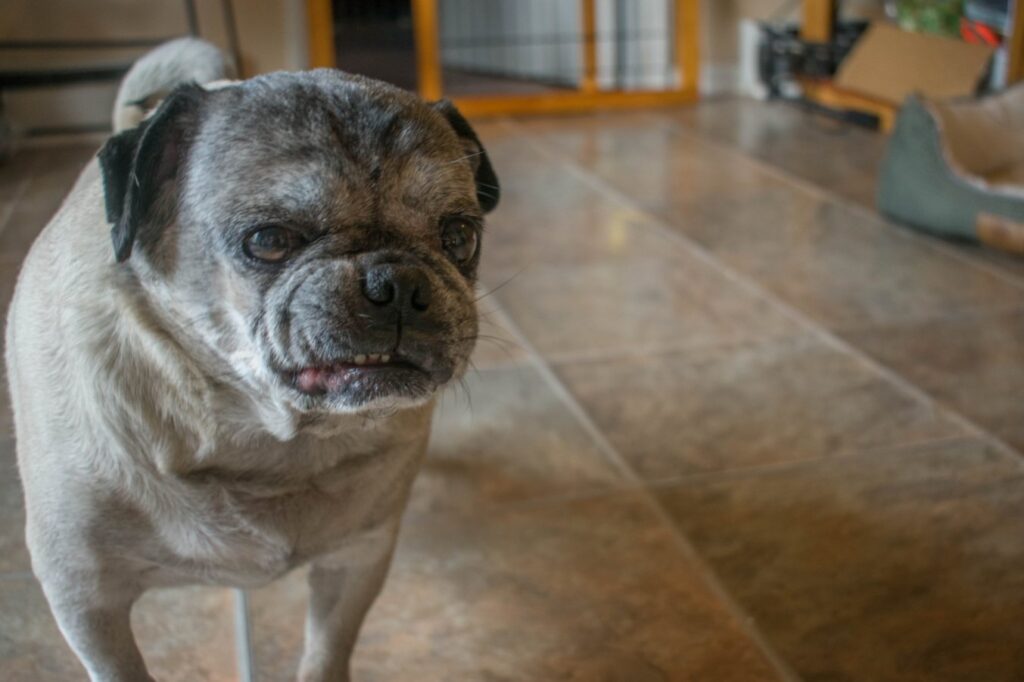Pug Body Language Explained
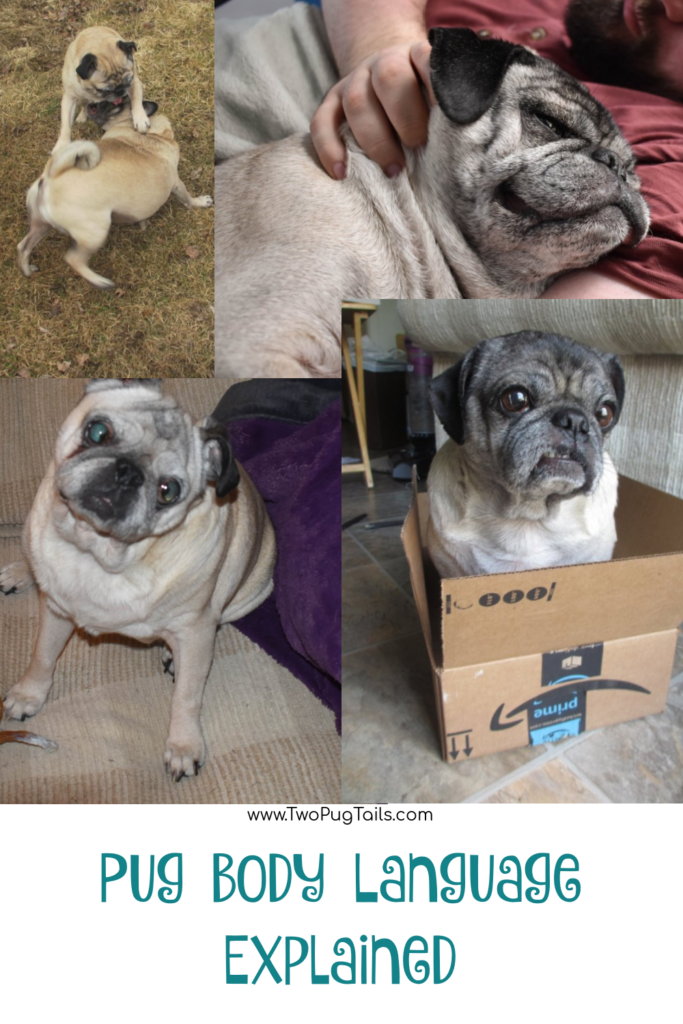
Tail wagging is usually happiness, but not always! Tail wagging shows heightened emotions in a dog, and most dogs will have high emotions when they’re excited to see you, or excited to go for a walk or things like that. However, if you see your dog wagging it’s tail extremely quickly and in short motons this is a sign of VERY heightened emotions and may be a sign of major distress or aggression. The angle of their tail can give you a clue on how happy they are, or not. Happy tail wags are done with their tail really high.
Tail tucking (meaning they have lowered their tail really far down or even between their legs) is fear. If you have a pug who has started to consistently leave their tail down, this can be a sign of pain or pug myelopathy.
Showing their belly is trust…usually. Sometimes it’s a fear response where they are trying to show submission.
Showing their front teeth in a growl/snarl is a warning. They may feel unsafe or protective over their space or belongings. However, this is very different from when a pug’s lip gets stuck and this causes them to show teeth. Most pugs have underbies so it’s easy for their lower teeth to show by accident. When this happens, it is a neutral expression.
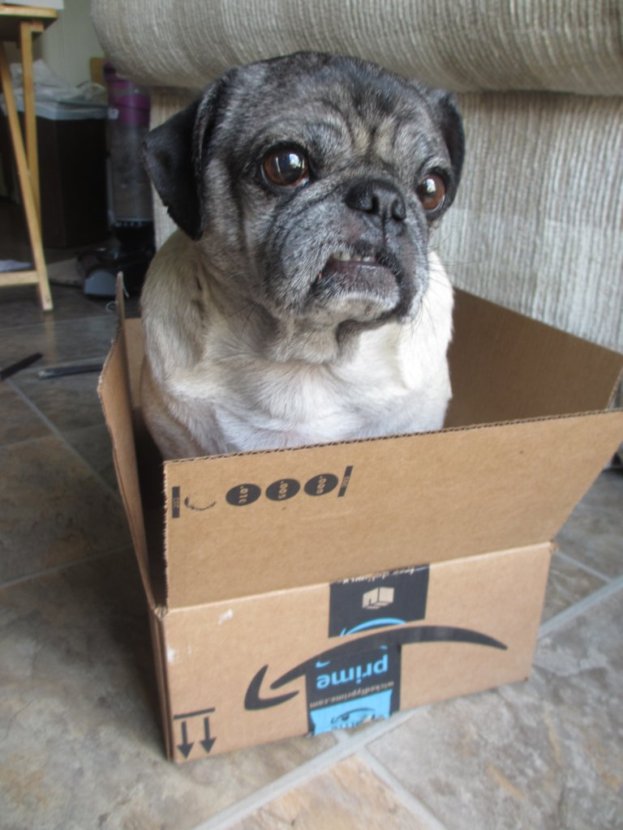
Here’s an example of when Frank’s teeth were showing just due to his lip getting stuck – there was no aggression here!
Lots of face-licking. If your dog keeps licking its own face, it can be a sign of nervousness. It could also just be itchy or trying to clean itself. Pug wrinkles require special care, and if not kept up with their faces can get itchy or even infected. Check out my pug wrinkles blog post to learn more. But if there is no physical cause, it’s usually anxiety.
Yawning is often a sign of stress. If your dog is yawning around other dogs or people, make sure they have space to hide or get away from the interaction as they may want to get away.
A relaxed body position (such as laying around) is a sign of a content to happy pug.
A stiff body suggests anxiety, upset or aggression.
Licking your face is a sign of affection.
Raised hackles is a sign of high emotions. Hackles are the strip of hair that run down your dogs spine. If your dog’s fur on that strip are raised, this tells you that they are having heightened emotions, but it could be positive or negative.
Following you around means you are their person! Pugs are bred to be lap dogs so if a pug is following you around 24/7 this means they’ve decided you are their primary person and their job is to sit on your lap and make you happy.
Whining or whimpering. This can be a sign of fear, but is often a way that pugs communicate longing. My pug Frank would whine while sitting next to his food dish when he wanted food. He’d whine when sitting near the exterior door to let us know that he wanted to go outside. He’d look at us and whine if we were sitting on the couch or a chair and he wanted in our laps. If you have a lot of crying happening with your pug, you might want to read my post titled pug crying.
Bottoms up. If your pug puts their front legs down and sticks their rear-end in the air, this is a sign that they want to play.
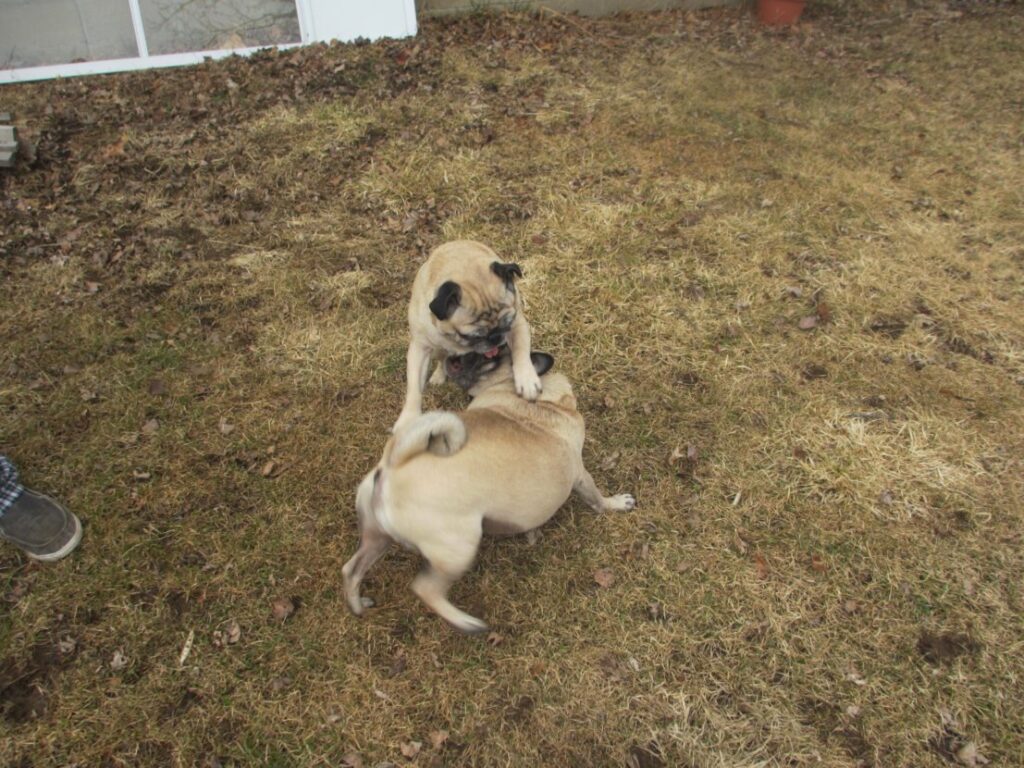
Prancing or walking quickly in a small area, such as doing little laps is a sign of excitement or happiness. My pugs both would prance around in a circle when they were excited to see someone.
Exaggerated sneeze. Pugs can sort of fake-sneeze when they are irritated or annoyed. Frank would do an exaggerated sneeze if we were ignoring him while he wanted in our laps. It was sort of his way of saying “heck you!”
Partially closed eyes or slightly squinting eyes is happiness or calmness.
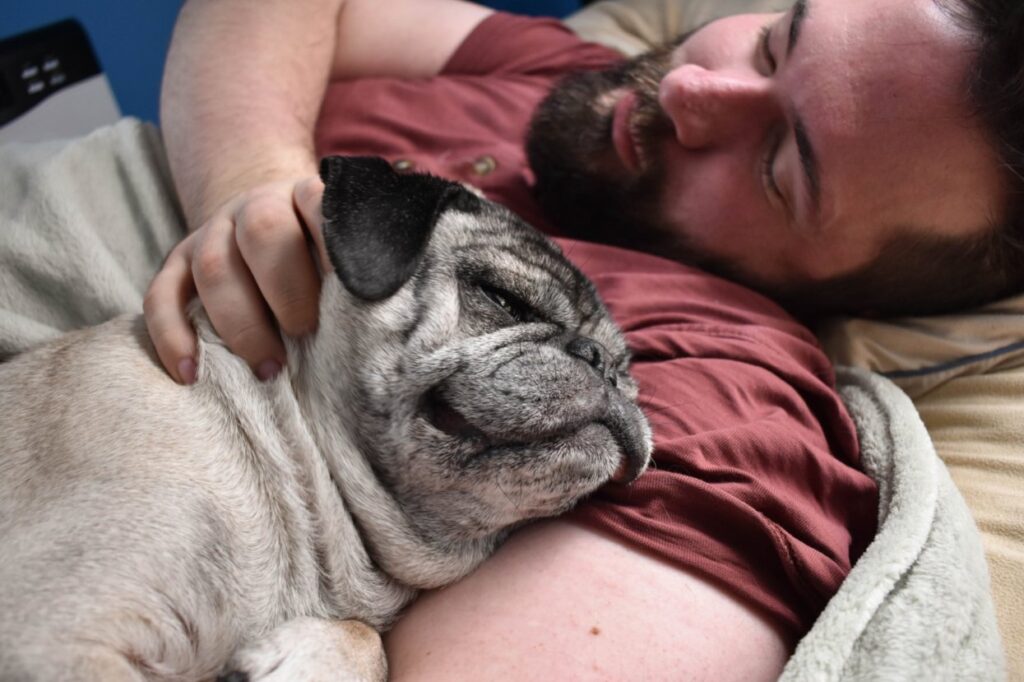
Frank is awake but his eyes are so squinted they’re almost closed because he was really enjoying this cuddle and being pet.
Staring. When dogs stare with wide-eyes for a long time this is a sign of aggression.
Ears back is a sign of anxiety or submission.
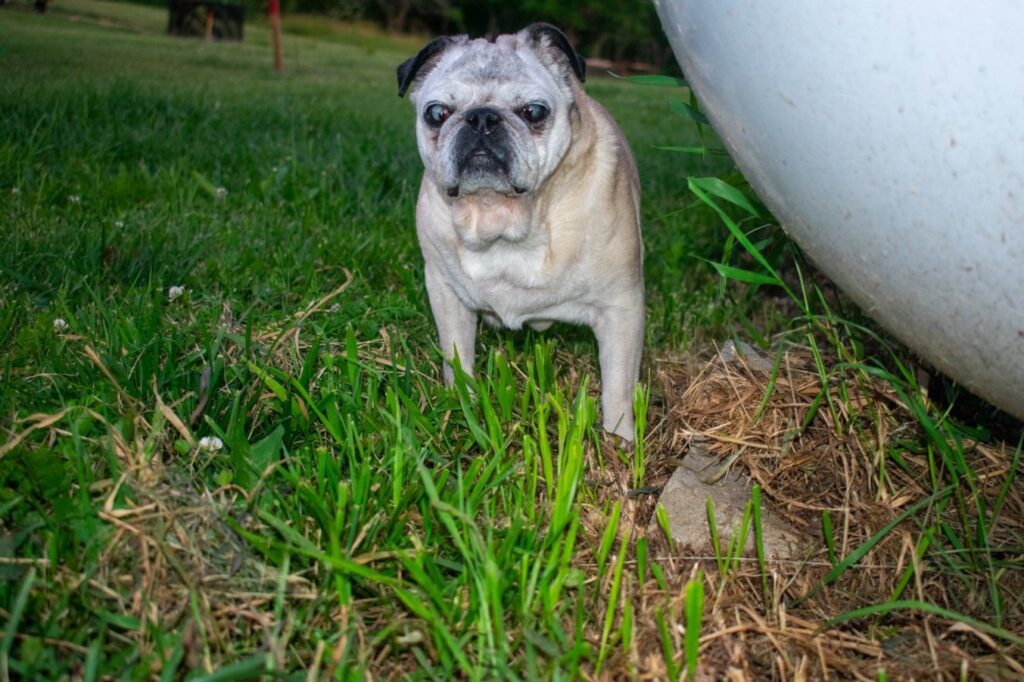
Beans ears were up and slightly back, here. She did this more as she got older and blind, when she heard or smelled something. She didn’t seem truly afraid, but she would be on guard or cautious more often after losing her sight.
Ears pushed far forward is aggressive.
Ears up is curiosity or interest.

Beans and this puppy both had their ears up as they were checking each other out – both were curious and occasionally cautious, but friendly.
Wiggling ears is often a sign of curiosity or interest. My pugs would wiggle their ears a bit when sniffing something new.
Tilting their head may be a sign that your dog is listening closely! (Source: SmithsonianMag.com)
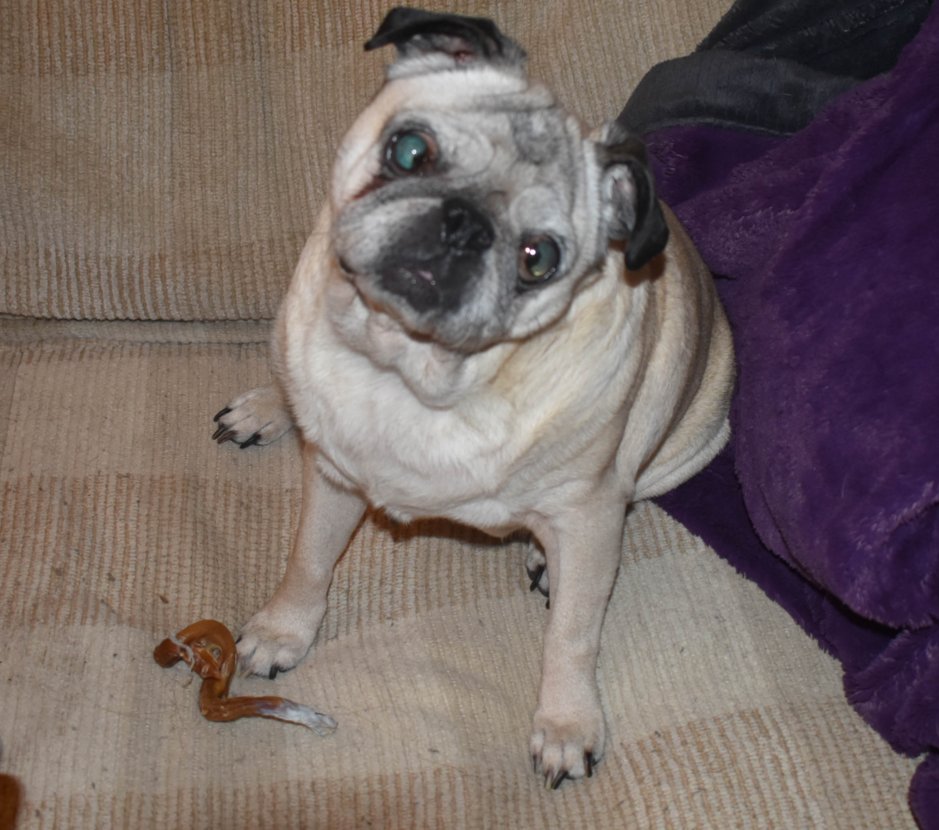
How pug body language is different from other dogs
Forehead wrinkles are said to be a sign of aggression in most dogs, but pugs have forehead wrinkles all the time.
A tail that is ‘up’ is said to be excitement or aggression, but pugs have upturned tails so their tails’ default or neutral position is up.
Source: https://www.akc.org/expert-advice/advice/how-to-read-dog-body-language/
